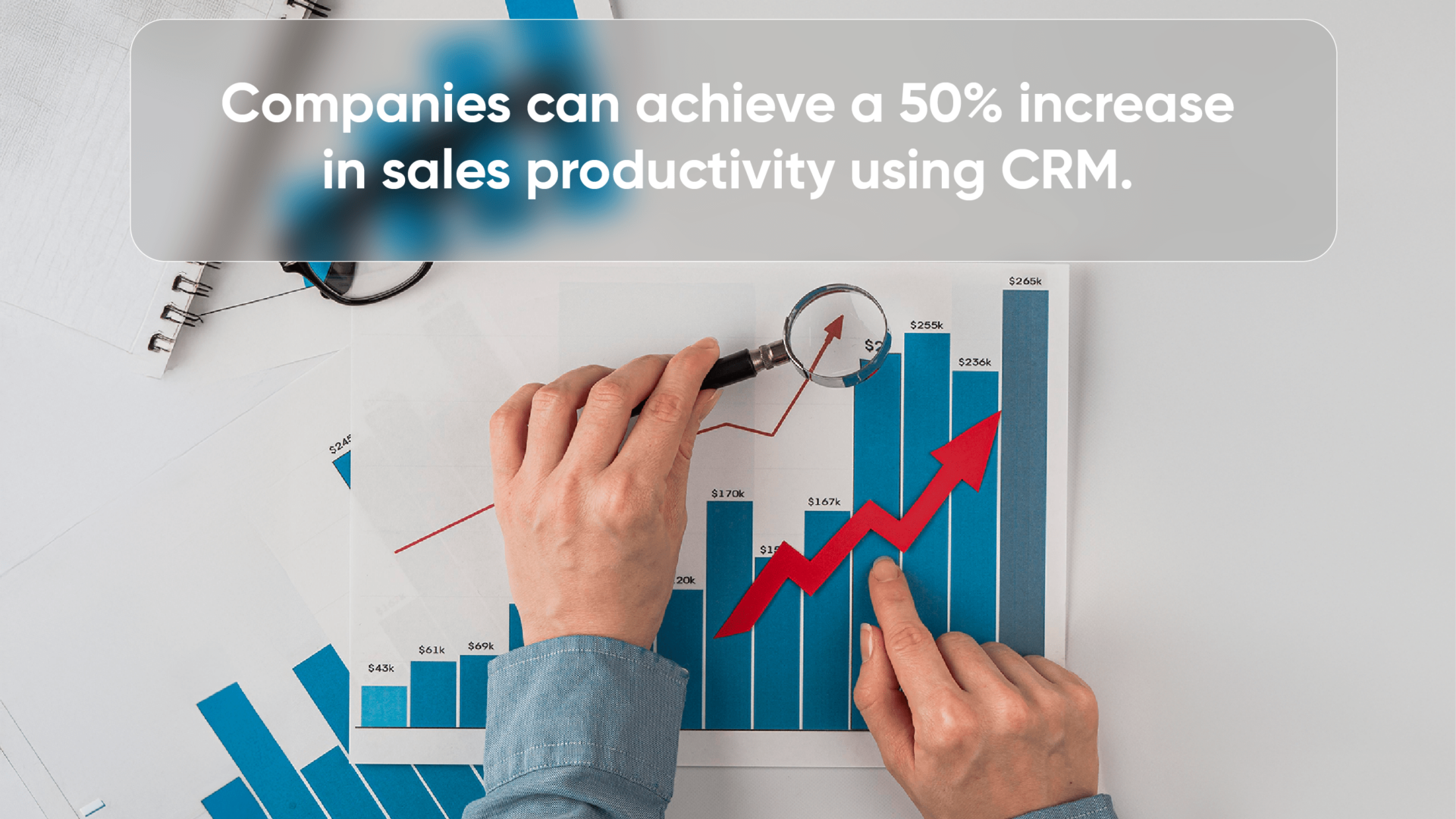Make Your Team More Productive: Tips for Using Microsoft Outlook as a CRM System
Productivity fuels every successful team—especially in the high-stakes world of manufacturing, where every second counts.

Whether you run a small operation or a large industrial enterprise, finding ways to work more efficiently is essential. Streamlining processes helps you stay ahead of the competition.
Did you know that the widely used Microsoft Outlook platform can be turned into a customer relationship management (CRM) software? This transformation can help you reach the productivity you’re aiming for.
Outlook’s seamless integration with your CRM allows you to streamline efforts across production, sales, and delivery teams. This not only enhances customer service but also improves overall team efficiency.
To answer the questions of how to use Outlook as a CRM, we will cover the following:
Table of contents:
It’s About Working Smarter, not Harder
Tools for Maximum Productivity: Using Outlook as a Comprehensive CRM System
Tips on How to Use Outlook as a CRM
A Trusted Option: Here’s How eWay-CRM Boosts Productivity
It’s About Working Smarter, not Harder
Productivity is not a gift that is automatically bestowed on some teams and not others. It requires a solid foundational strategy and a good amount of planning to achieve.
It’s primarily the result of combining several effective elements. Like clearly defined work goals and dynamic management. And most importantly, having the right tools for the job.
Productive teams have a strong understanding of their job requirements. They are also trained and equipped to work efficiently.
The right tools, like a CRM or ERP system, help streamline work processes. These tools further boost team productivity.
You cannot mandate productivity, you must provide the tools to let people become their best.
-Steve Jobs, Co-founder and former CEO of Apple
Solid management practices and training help teams handle challenges more effectively. Adding tools like a CRM integrated with Outlook further enhances their readiness.
A study from the career advisory platform, Zippia, shows that on average, companies can see a 50% sales productivity increase by using CRM.

Tools for Maximum Productivity: Using Outlook as a Comprehensive CRM System
Using a CRM within the familiar Microsoft Outlook interface helps teams work more efficiently. It’s simple to use, without the steep learning curve of more complex CRM solutions.
Here are some key benefits of integrating your CRM with Outlook:
Centralized Information Management
Using your Outlook as a CRM keeps all customer-related data, communications, tasks, and appointments in one place. Everyone on the team can easily access and update information. This ensures that everyone stays on the same page.
You can easily upload contacts from Outlook to the CRM and quickly synchronize this information across the team.
Every new email coming into Outlook can instantly be stored in the CRM. This means that each email brings a new opportunity for fostering customer relations.
With all information in one place, the team can easily track customer preferences, order history, and interactions.
This helps them respond quickly to questions and problems, building stronger customer relationships.
Enhanced Collaboration
Another key advantage of using a CRM integrated with Outlook is the ability to share customer information. Teams like sales, production, supply chain, and customer service can all access the same up-to-date data. This makes working together much easier.
You can assign responsibilities and track progress with task statuses visible to everyone. This keeps the team in sync and working together as a cohesive unit.
This streamlined collaboration makes exchanging information easy and efficient. It reduces the need for back-and-forth communication and lowers the risk of miscommunication.
Troubleshooting Made Easier
The reality is that there will always be customer issues to handle. With an Outlook-integrated CRM, team members can check the shared customer history when issues come up. This helps them understand the context of past interactions.
This makes troubleshooting faster and easier, reducing customer frustration.
Stronger Customer Relationships
A CRM system integrated with Outlook enables teams to keep a complete view of customer interactions. This includes tracking emails, calls, and meetings in one place.
They can track customer preferences, purchase history, and communication habits. This helps create more personalized interactions and builds stronger customer relationships.
Streamlined Workflows
Automating repetitive tasks and reminders through the CRM system helps teams save time. It also reduces the chance of common errors.
Streamline your delivery and sales processes with customized workflows. Set up workflows for lead management, customer onboarding, and follow-up tasks. This ensures tasks are executed consistently and efficiently.
Integration with Other Tools
Integrating your CRM system with other tools is another effective way to boost productivity. Combining your CRM in Outlook with extra tools unlocks even more benefits for teams. This approach helps them optimize their operations effectively.
For example, integration with Microsoft Teams allows team members share and discuss information instantly. They can create channels dedicated to customer satisfaction or delivery performance. In these channels, they can share updates, documents, and collaborate on tasks directly within the CRM system.
Integrating with Power BI allow teams to make data-driven decisions more effectively. It enables them to gain valuable insights from CRM data much faster. They can create interactive dashboards, charts, and reports to visualize key data.
This provides a comprehensive bird’s-eye view of order fulfillment, QA analysis, and other essential metrics. Enhance your manufacturing efficiency through effective ERP data analysis.
Tips on How to Use Outlook as a CRM
To fully utilize Microsoft Outlook as a comprehensive CRM system, consider these tips. They can help maximize your team's productivity.

Start by Setting Up Your Outlook
Let’s first discuss the setup process for new Outlook users. This also applies to those who already use it but are unsure about the proper steps. Starting off correctly is the best preparation one can do before integrating with a CRM system. To optimize your use of Microsoft Outlook and improve efficiency, consider if the following has been done:
- Organize your emails logically into folders for easy navigation and quick retrieval.
- Learn the important Outlook keyboard shortcuts to save time and streamline your workflow.
- Create a professional email signature in Outlook to enhance your outgoing messages.
- Set up an out-of-office message to inform others of your availability during vacation or absence.
- Share your Outlook calendar with colleagues to simplify scheduling and avoid lengthy back-and-forth conversations.
- Use email templates and Quick Parts to expedite repetitive tasks. Save frequently used emails as templates for easy future use.
- Use notifications selectively for important emails. Avoid being overwhelmed by constant email notifications and focus on what matters most.
- Use the "Do not deliver before" feature in Microsoft Outlook to schedule your email deliveries. This helps you send emails at the best times and avoid missing important occasions.
- Get familiar with Quick Step for shortcuts and repetitive tasks. Also, be sure to learn which quick steps are not reversible to avoid, such as permanently deleting important emails.
Customize Your CRM
First, select the best CRM option for your team that integrates with Outlook, such as the user-friendly eWay-CRM. Once chosen, you can begin customizing it to fit your needs.
Tailor your CRM in Outlook by keeping in mind your team’s needs and by choosing the features or modules that are most relevant.
It’s also important to create custom fields to capture specific data relevant to your business. This customization allows you to track and organize information in a way that aligns with your workflow.
Additionally, customize views and filters to prioritize and visualize important information. This makes it easier to access and track relevant data.
Utilize Categories and Labels
Organizing contacts, tasks, and appointments by categories makes it easy to find what you need. Use labels like leads, suppliers, or priority tasks to quickly identify different records.
This helps you navigate your CRM data and find specific information faster.
Leverage Email Integration
Connect your Outlook email with the CRM system for smooth communication and better record-keeping.
Track email conversations and link them to relevant contacts or opportunities. This gives you a complete view of your customer interactions.
You can also use your CRM’s email templates to save time and keep your messages consistent. This helps make sure important information is shared clearly.
Set Reminders and Follow-ups
Take advantage of the reminder and scheduling features in your Outlook-integrated CRM. This way you will stay on top of important tasks and appointments.
With this, you can set reminders for upcoming deadlines or client follow-ups to ensure timely actions.
Reminders assist with effectively managing your workload. They also support important customer relationships by ensuring conversations aren’t forgotten.
Collaborate Effectively
Using Outlook as your CRM also can greatly contribute to team collaboration. You can easily share the CRM tasks and information with the team – ensuring everyone is on the same page.
Shared calendars make it simple to coordinate schedules and plan meetings.
You can also assign tasks to share the workload and keep everyone accountable.
Sync to your Smartphone
An Outlook-based CRM system that syncs seamlessly with smartphones further boosts productivity. It allows team members to access the CRM on the go.
Whether in the office, on-site, or traveling. Team members can check project updates on their phones in real time. This ensures that critical information is always at their fingertips.
A Trusted Option: Here’s How eWay-CRM Boosts Productivity
eWay-CRM has become a trusted system for over 1500 companies. eWay-CRM offers a range of features, from sales management to email marketing. All within the familiar Outlook interface.
This tool plays a key role in boosting companies' productivity.
In addition to standard CRM features, eWay-CRM provides extra tools to improve efficiency. Here are some features that make operations easier.
Sales Functionality
eWay-CRM offers a range of sales features that enable teams to streamline their processes and boost sales productivity.
Here's how eWay-CRM enhances sales functionality:
- Better organization of deals and leads: With eWay-CRM, all deals and leads are centralized in one place. This removes the need for scattered information across various platforms or spreadsheets. It ensures that sales teams have a complete view of their sales pipeline - from initial contact to closing a deal.
- Integrations with web forms and lead-generating tools: eWay-CRM integrates smoothly with web forms and lead-generation tools. This makes it easy to capture and import leads directly into the CRM system. This saves time, reduces errors, and removes the need for manual data entry.
- Everything the sales team needs in one place: It enables sales teams to store and manage all relevant communication in one place. You can link emails, notes, and documents directly to contacts, deals, or leads. This provides a complete view of the customer journey.
- Task Reminder Functionality: eWay-CRM includes reminder functionality to help sales teams manage important tasks. This ensures they stay on top of deadlines. You can set reminders for follow-up calls, meetings, or other sales-related activities.
- Automated Workflows: It offers automated workflows that streamline repetitive sales processes. You can set workflows to automatically trigger actions based on specific conditions. This saves time and reduces manual effort.
- ERP Integration: Connecting your CRM with an ERP system smooths order processing and helps with production planning.
- Power BI Dashboards: eWay-CRM integrates with Power BI, providing clear and customizable dashboards for sales insights. Teams can gain valuable insights into their sales performance by tracking key metrics.
Email Marketing Made Easy with eWay-CRM
eWay-CRM goes beyond traditional CRM functionalities by offering powerful email marketing capabilities.
Examples of how eWay-CRM assists with email marketing in a user-friendly way:
- Send marketing emails from your CRM: You can create and send marketing emails directly from the CRM platform. This eliminates the need for separate email marketing tools, streamlining your workflow. It also keeps all customer interactions in one place.
- Proven templates: eWay-CRM provides professionally designed email templates that help improve marketing success. These templates save you time and make sure your emails leave a great impression on your audience.
- Track email behavior: You can track and analyze user behavior with detailed statistics. You can see who opened your emails, which links were clicked, and how recipients engaged with your content.
Efficient Project Management with eWay-CRM
eWay-CRM also supports project management. It provides businesses with the tools they need to manage projects effectively.
Helps production, sales, and delivery teams coordinate their activities seamlessly. This leads to better workflows and better results.
Here are some of the ways eWay-CRM assists with project management in a user-friendly way:
- Keep up to date with deliverables: eWay-CRM enables you to track and monitor project deliverables. This helps ensure tasks are completed on time and projects stay on track. This visibility helps you manage project timelines and deliver successful outcomes.
- Create tasks and subtasks: eWay-CRM enables you to break down projects into manageable tasks and subtasks. Assign responsibilities, set deadlines, and track progress. This helps everyone know their role and ensures tasks are completed efficiently.
- Centralized project communications: All project-related communications are stored in one central location. You can easily access emails, notes, and documents associated with a specific project.
- Time tracking is simplified: eWay-CRM simplifies time tracking with its timesheet functionality. Team members can log their hours spent on specific tasks or projects. This provides accurate data for project costing, resource allocation, and client billing.
The Solution for Maximum Team Performance
Productivity, or the lack thereof, is a common issue for many businesses. Including those in the manufacturing industry, where efficiency and precision are vital to success.
However, as we all know, continuous innovation is essential for business success. Companies should keep evolving to achieve the best results.
Having the right tools and resources on hand, the goal of increased productivity becomes far easier to achieve. If you’re curious about using Outlook as a CRM or its productivity benefits, this article has the answers. These insights should make your decision much easier.
In summary, a CRM integrated with Outlook, like eWay-CRM, is a powerful tool for maximizing team productivity. It helps achieve exceptional results. Implement these strategies now and prepare to watch your team's productivity grow to new heights.
Discover the ease of a user-friendly CRM that sits right inside your Outlook! Get started with eWay-CRM for free today.











